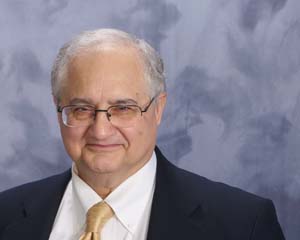Introduction to Distance Education: Early Research
By: Farhad Saba, Ph. D.
Founder, Distance-Educator.com
Systematic study of distance education is a relatively new phenomenon. Formal scholarly journals solely dedicated to distance education did not appear in the English speaking world until the 1980s, although the first formal studies of the use of radio and television in education appeared in the 1930s and 1960s respectively. These were published published in the literature of educational technology at the time.
Studies about educational radio were important as they revealed some of the primary issues in the use of audio for learning, many of which have not been resolved yet even in the age of podcasting. These early studies are still very relevant as a source for framing research issues in the contemporary environment. Wilbur Schramm, Professor Emeritus of Communication, Stanford University, conducted some of the earliest studies on the use of educational television in the 1960s and 1970s.
The early studies on the use of radio or television in education had at least three primary limitations:
- Most of them were survey studies measuring learner satisfaction. They did not probe into deeper questions and did not measure if the learners actually benefited from instructional television programs in increasing their knowledge or improving their skills.
- The early studies were not based on any theories in general. They were not measuring operationally defined constructs gleaned from theories of learning, or general systems theory, or other theoretical frameworks that constituted the foundation of educational technology. It was not until the 1980s that a formal theory of distance education emerged and researchers began to base some of their studies on these theories. Nevertheless, in the early 1980s and well into the 1990s studies of distance education remained to be anecdotal, emphasizing how a program of distance teaching and learning was formed and implemented in a particular institution. As such, the results were not generalizable and could not be replicated in formal studies by other scholars in the field. Even today, many studies regarding distance education remain to be atheoretical. Because of this they are marginally useful to advance our knowledge of the field.
- Those studies that attempted to delve into the deeper questions of improved learning suffered from a methodological shortcoming. The design of most of the earlier studies were based on comparing the effectiveness of radio or television with a teacher! It was as if though we would compare the effectiveness of the automobile with its driver or its designer. Because of this basic flaw of comparative studies and the statistical methods employed in them, they usually showed that there were no statistically significant difference between learning from television and learning in a classroom. The methodological flaw also obscured any advantages that either of these methods (classroom vs. television) would have had. Individual differences of students were disregarded by averaging the scores of learners in the experimental group and the control group. When differences were taken out by aggregating scores, no significant difference between one mode of instruction and another could have been expected.
Today, research in distance education is less anecdotal nd more theoretical. Researchers also employ a variety of qualitative and quantitative methods of analysis. They have resolved some of the methodological issues that were dominant in earlier years. However, some researchers insist in using comparative studies. As the field has expanded and many research studies are now conducted by faculty in disciplines other than educational technology and distance education many studies are conducted without taking into consideration the basic theoretical foundations of the field.
I will review the status of current research in distance education in future articles.








